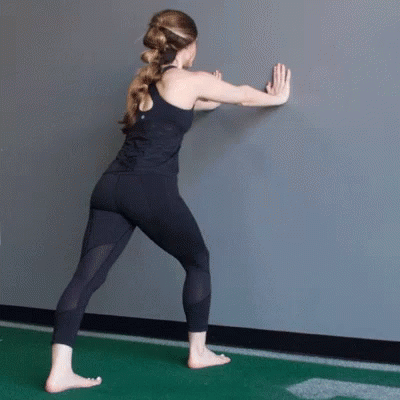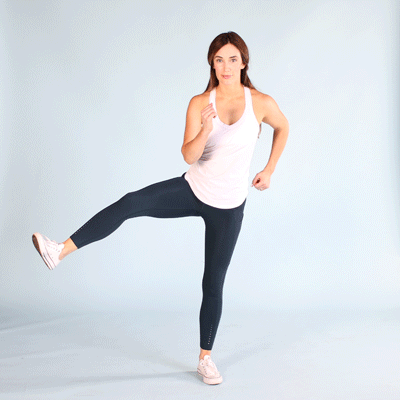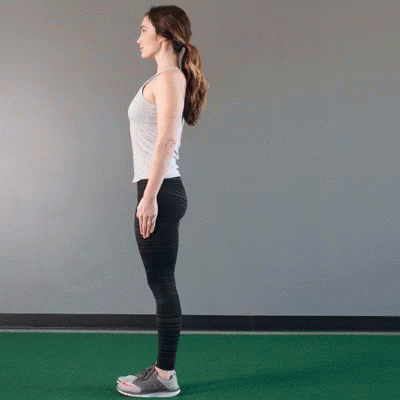Professional sprinters sometimes devote an hour warming up for a race that lasts about 10 seconds. In reality, it’s common for many athletes to carry out dynamic stretches within their warmup and static stretches in their cooldown to keep their muscles healthy.
Even when you’re not an athlete, such as stretches in your everyday routine has many added benefits. Not only does stretching help you avoid accidents, but it might also help slow down long-term mobility loss and enhance circulation.
Let us take a better look at the several benefits of full-body stretching and how to build a stretching regimen that targets all your major muscle groups.

What are the benefits of stretching?
Exercising frequently can have benefits for both mental and physical health. A number of key benefits include:
- Reduced injury risk. Regular stretching will help lower your risk of muscle and joint injuries.
Improved athletic performance. Focusing on dynamic stretches before exercising can improve your athletic performance by decreasing joint restrictions, according to a 2018 scientific review. - Improved circulation. A 2015 study of 16 men found a 4-week static stretching program improved their blood vessel function.
- Increased range of movement. A 2019 study of 24 young adults found that both static and dynamic stretching can enhance your range of movement.
- Less pain. A 2015 study on 88 university students discovered an 8-week extending and strengthening routine was able to significantly reduce pain brought on by poor posture.
- Relaxation. A lot of men and women discover that stretching with slow and deep breathing helps promote feelings of relaxation.
When to stretch
There are many techniques to stretch, and a few varieties of stretching are better at particular occasions. Two common types of stretches include:
- Dynamic stretches. Dynamic stretching involves actively transferring a muscle or joint through its full range of movement. This helps get your muscles warmed up and prepared for exercise. Cases of dynamic stretches include arm circles and leg swings.
- Static stretches. Static stretching involves stretches that you hold in place for 15 minutes or more without moving. This helps your muscles loosen up, particularly after exercise.
Before exercise
Warm muscles have a tendency to perform better than cold muscles. It is important to include stretching on your warm-up routine so you can get your muscles ready for the upcoming activity.
Although it’s still a subject of debate, there is little evidence that static stretching before exercise can reduce strength and power output in athletes.
If you are searching for energy or speed-based game, then you might want to avoid static stretching in your warmup and elect for dynamic stretching rather.
After exercise
Including stationary stretching following your workout might help reduce muscle soreness brought on by strenuous exercise.
It’s a good idea to extend all parts of your body, with an emphasis on the muscles that you used during your workout.
After sitting before bed
Static stretching activates the parasympathetic nervous system, according to a 2014 study of 20 young adult men.
Your autonomic nervous system is responsible for your body’s digestive and rest functions. This could be why many men and women find stretching before bed helps them unwind and de-stress at the conclusion of the day.
Stretching after a period of prolonged inactivity can help increase blood circulation to your muscles and decrease stiffness. This is the reason it feels good — and can be advantageous — to elongate after waking up or after sitting for a long time period.
The way to do a full-body extending routine
When putting together a full-body stretching regimen, aim to include a minimum of one stretch for every significant muscle group in your body.
You may realize that certain muscles feel particularly stiff and need more attention. For example, those who sit a lot frequently have tight muscles in their neck, hips, legs, and upper spine.
To target especially stiff Locations, you are able to:
- Perform multiple stretches because of that muscle group
- Hold the stretch longer
- Function the stretch over once
Calf stretch

- Muscles stretched: Trainers
- When to do: after conducting or any time you have tight calves
- Safety tip: Stop immediately if you feel pain in your Achilles tendon, wherever your calf attaches to an ankle.
How to do this stretch:
- Stand with your hands against the back of a chair or on a wall.
- Stagger your feet, one in front of the other. Keep your back leg straight, your front knee slightly bent, and both feet flat on the floor.
- Maintaining your spine straight and back your foot flat on the ground, bend your front knee to lean toward the chair or wall. Do this until you feel a gentle stretch in the back of your back leg.
- Hold the stretch for about 30 minutes.
- Repeat on the other side.
Leg swings

- Muscles stretched: hips, inner thigh, glutes
- When to perform: prior to a workout
- Safety tip: Start with smaller swings and make each swing bigger as the muscles loosen.
The Way to do that stretch:
- Stand with your toes shoulder-width apart.
- Balancing on your left leg, swing your right leg straight back and forth in front of your entire body, just going as far as is comfortable.
- Perform 20 reps.
- Repeat on the opposite side.
Hamstring stretch

- Muscles stretched: hamstring, lower back
- When to perform: following your workout, before bed, or when your own hamstrings are tight
- Safety suggestion: Should you can’t touch your feet, try resting your hands on the floor or on your leg instead.
The Way to do that stretch:
- Sit on a soft surface, with one leg straight out before you. Place your foot from the inner thigh of your leg.
- While keeping your back straight, lean forward and reach for your toes.
- When you feel a stretch at the back of your extended leg, hold for 30 minutes.
- Repeat on the other side.
Standing quadriceps stretch

- Muscles stretched: quadriceps
- When to perform: after running or if your thighs feel tight
- Safety tip: Aim for a gentle stretch; overstretching can cause your muscles to become tighter.
How to do that stretch:
- Stand upright and pull your right foot into your butt, holding it there with your right hand.
- Keep your knee pointing downward and your pelvis tucked under your buttocks throughout the stretch.
- Hold for 30 minutes.
- Repeat on the other side.
Glute stretch
- Muscles stretched: glutes, hips
- When to perform: after conducting or prior bed
- Safety suggestion: Stop if you feel pain in your knees, hips, or anywhere else.
How to do this stretch:
- Lie on your back with your legs up and your knees bent at a 90-degree angle.
- Cross your left ankle over your right knee.
- Grab your right leg (either over or behind your knee) and pull it toward your face until you feel a stretch in your opposite hip.
- Hold for 30 seconds.
- Repeat on the other side.
Upper back stretch

- Muscles stretched: back, shoulders, neck
- When to perform: after prolonged sitting or if your back is rigid
- Safety suggestion: Attempt to stretch both sides equally. Do not force the stretch beyond what’s comfortable.
The Way to do that stretch:
- Sit in a chair with your spine straight, core engaged, and ankles in line with your knees.
- Twist your body into the right by pushing the right side of the seat with your left hand.
- Hold for 30 minutes.
- Repeat on the other side.
Chest stretch

- Muscles stretched: chest, biceps, shoulders
- When to do: following long periods of sitting
- Safety tip: Stop immediately if you feel discomfort in your shoulder.
How to do this stretch:
- Stand at an open door and place your forearms vertically on the doorframe.
- Lean forward until you feel a stretch through your chest.
- Hold the stretch for 30 seconds.
- Repeat on the other side.
Neck circles
/Verywell-1-3567200-NeckRoll0-1379-5991bc7503f4020011a3d513.gif)
- Muscles stretched: neck
- When to do: after sitting or whenever your neck feels tight
- Security tip: It’s normal to have one side that feels tighter than another. Consider holding the stretch more on the side that feels tighter.
The Way to do that stretch:
- Dip your chin on your chest.
- Tilt your head to the left till you feel a stretch across the ideal side of the neck.
- Hold for 30 to 60 seconds.
- Repeat on the other side.
The bottom line
Stretching regularly can:
- Enhance your Selection of motion
- Reduce your risk of harm
- Improve circulation
- Boost athletic performance
If you’re looking to create a full-body stretching regimen, attempt to select at least one stretch which targets each significant muscle group.
The moves covered in this article are a good beginning, however there are many other stretches you can increase your routine.
If you have an accident or wish to understand what sorts of stretches can work best for you, make sure to speak with a certified personal trainer or physical therapist.

